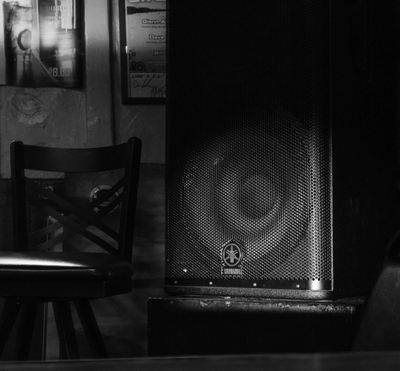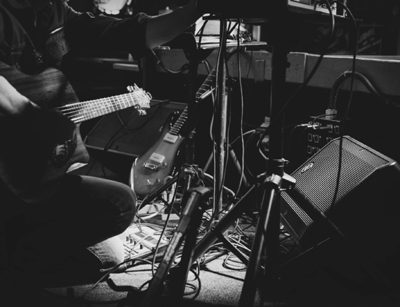Founded in 1972, John and Peter’s is a live music venue in New Hope, Pennsylvania. Artists who have graced its stage cover all musical genres, ranging from the region’s best bands to headliners such as Odetta, Mary Chapin Carpenter, Norah Jones, Ween and George Thorogood.
The venue recently transitioned from old-school analog mixing to a TF-RACK digital mixer from Yamaha partnered with DSR215 powered main loudspeakers and three DBR12 loudspeakers as monitors. Yamaha spoke to house sound engineer Chris Williams about this end-to-end Yamaha live sound system; he discusses why it has not only made his working life easier but also improved the sonic experience of musicians and customers alike.
Yamaha: How does your new Yamaha system compare to your previous live P.A.?
Chris Williams: What we had before was a standard sort of compact 16-channel analog mixer, a couple of EQs, and an external effects unit. Now, all the EQ, effects, and other processing is being handled right within the TF-RACK mixer. That eliminates a lot of connections, noise, and troubleshooting.
A lot of nightclub sound techs are hesitant to learn a digital mixer; they just want to grab an analog knob or fader and keep it simple. How did you find the learning curve on the TF-RACK?
I used to fall into the category you’re talking about, so I was surprised at the smoothness of learning the TF. There’s something to be said for one knob per function, and if the TF did that for every feature it has, it would take up the entire room. It was easy for me to learn how to access all the functions quickly. It really didn’t take long to get the basics down, and after using it a few times, it became just as easy as analog. As very much a novice with regard to working a digital mixer, I can vouch that after the demos that Yamaha gave us before we made the purchase, I was able to fully set up the system and get everything I needed operational.
For different acts — say, bands that might be recurring — do you use any of the TF’s save-and-recall features?
Yes. Some of the regular bands even bring their own USB thumb drives with their mix settings stored. They just plug them into the TF and we might need to make a few tweaks for the room that night, but they’re basically ready to go.
The TF-RACK can record 34 tracks to a computer over USB as it’s doing the live mix. Have you used it for any live recording?
Not yet, but we plan to implement that. I have a computer hooked up to a large touch-screen display to make it easier to mix on the TF, mainly for more screen space, as the unit itself is in rack format. Next up, we’re going to get a bank of hard drives so we can record the bands live.
Do you have a control surface?
Other than the computer and touch-screen, we just have the TF-RACK unit itself. Of course, there are TF-series mixers that do have the faders and are in a desktop format, but I chose the TF-RACK because that footprint is where the problems came in with a lot of our previous mixers. We’re a very small room with a capacity of about 100, and the stage is in the middle of one wall with the audience on three sides. Our sound control area isn’t closed off from the crowd. A lot of different people use that area, so it’s prone to spills and jostling. Under those conditions, the first things that always break are those faders and knobs that are facing upwards.
Now we have the TF-RACK mounted with a cover so nothing can spill on it, and with the separate touch-screen hooked up, even the TF’s own screen doesn’t get poked at constantly. If necessary, it’s a lot easier to replace a computer monitor than it is the central audio hub of our whole operation. Several of the local guys who do sound for us actually use the [Yamaha TF StageMix] app on their iPads, which hook up to the TF-RACK over wireless. They walk around the club to check the sound and just mix on their iPads.
How do you feel about the sound quality of the TF-RACK? Are the preamps clean, for example, even when you drive them hard?
Well, I should say that we don’t have to drive anything too hard because, by design, all our Yamaha equipment is just a little bit overkill for the room. But as for sound quality in general, the minute we installed the TF and the Yamaha speakers, things sounded better before we even knew what we were doing! [Laughs.] Every musician who has come in here and was familiar with the old system has commented very positively on the improvement, on the increased clarity and definition of instruments at any place in the room.

That’s right. It’s not just a small room but kind of a strange room. It’s actually about twice as wide as it is deep — again, with the audience on three sides of the stage in a square U shape. So, we have the DSRs in the corners of the room. There’s also an old center-fill above the stage I cobbled together by hand, but we’ll eventually replace that with something from Yamaha as well.
Does the TF-RACK mixer integrate with the speakers in any way that helps you optimize the speakers for the room?
The TF series has output presets — EQ and processing — for pairing with various models of Yamaha powered speakers and many third-party devices such as in-ear monitors. It also has presets that put a particular Yamaha speaker in the context of a room size, or outdoors. As of the version we have, it didn’t have presets for the DSR215 in particular, but we’ve had great results using the small-room presets meant for the DSR12.
Given the room size, we’ll guess you’re not using subwoofers …
We really don’t need them. With each DSR having two 15-inch woofers, we have plenty of bass for the room and the acts who play here.
What’s the situation for onstage monitoring?
We have three Yamaha DBR12s: two in the front and one in the back. Sometimes we’ll line up all three in the front if the band doesn’t include a drummer who needs a monitor.

They’ve been amazed. For years, monitors have been a weak link at our club. They get abused, spilled on, and kicked around. We’ve already had the DBRs in place for four months and have had no problems. Since we’ve installed them, any musician or band who can describe what they want gets exactly what they want. Sometimes the bands’ backline can get pretty loud even though they don’t need to in this room. But with a thousand watts of power each, the DBR12s always get the vocals through. Being familiar with the room, I can usually get a basic monitor mix sounding good even before anyone checks a single microphone. The band just gets onstage and goes, “Wow, okay, that’s great.”
Are you using the TF-RACK presets for the monitors as well?
Yes, we use the DBR presets. But my favorite part of working with the TF, for both monitors and mains, is about the presets on the input side. You have them for nearly any mic you’d be using live, and for all kinds of instrument scenarios, direct boxes, whatever. These provide a great starting place for building a mix, and again, most of the time I can use these presets to dial in a good mix even before the musicians do sound-check. I might have to make little tweaks for a singer’s particular voice or, let’s say, a really muddy guitar, but that’s about it.
That a relative novice can default to those presets and use them as a jumping-off place for getting great sound has just changed our lives.
The visual feedback is also perfect. There’s something I really love about the gain meters that are on each channel — they’re really good at identifying the sweet spot. If I’m dealing with a loud singer or a weak pickup on acoustic guitar, I can pull those up and make things right in about two seconds.
With loud bands in such a small space, how do you deal with feedback?
The TF-RACK has a graphic EQ with a spectrum display. Again, the way Yamaha does the visuals makes it easy to tell what frequencies might be giving you a little too much, without you really having to think about it. Between that and the DBR presets, it’s extremely rare that we have any feedback issues. Which is saying something, because we have more volume coming out of our monitors than ever, and we’ve had bands with 12 people on this tiny stage. We’ve had five guitar players going at once — same thing. I think that has a lot to do with the input and output presets.
Do you have plans for expanding your use of this system and perhaps digging even deeper into its feature set?
Down the road, we’re very interested in how the TF-RACK can help us with web streaming of shows. We plan to take its output as the live audio feed for video we want to integrate into our website.
Based on your experience with the TF-RACK mixer, DSR215 mains, and DBR12 monitors, what’s your overall rating of Yamaha as a live sound solution?
The customer service has been phenomenal. I also can’t say enough about the ease of use. When you’re running a club, you have 1,500 things to do on any given night. Two of the partners here had zero experience with live sound coming in, and they both can get a band set up on the TF-RACK in a few minutes. I can even be working behind the bar and trust the system, and maybe just make minor adjustments as the night wears on and the band plays louder.
The sound quality is, as I’ve said, a huge improvement over anything we’ve had before — many musicians who play here are a who’s who of international touring pros, and they’ve commented on how clear things sound. The reliability has been nothing but solid in this environment. Everything about Yamaha has exceeded our expectations.




















